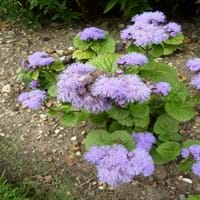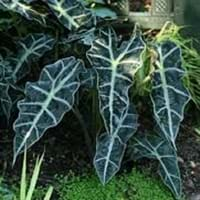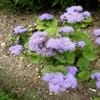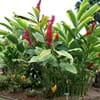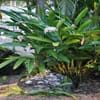Life Span
Annual and Perennial
Annual
Type
Tender Perennial
Tender Perennial
Origin
Mexico, Central America
Hybrid origin
Types
A. houstonianum f. isochroum, A. houstonianum f. luteum, A. houstonianum var. muticescens
Alocasia macrorhizzos, Alocasia odora
Habitat
Sunny Edge, Woodland Garden
Pastures, Wet forest
USDA Hardiness Zone
10-13
10-12
Sunset Zone
A1, A2, A3, H1, H2, 1a, 1b, 2a, 2b, 3a, 3b, 4, 5, 6, 7, 8, 9, 20, 21, 22, 23, 24
H1, H2, 22, 23, 24
Habit
Cushion/Mound-forming
Clump-Forming
Flower Color
White, Blue, Blue Violet
White
Flower Color Modifier
Not Available
Not Available
Leaf Color in Spring
Green
Lime Green, Dark Green, Bronze
Leaf Color in Summer
Green
Lime Green, Dark Green, Bronze
Leaf Color in Fall
Green
Green, Lime Green, Dark Green, Bronze
Leaf Color in Winter
Green
Lime Green, Dark Green, Bronze
Leaf Shape
Heart-shaped
V-Shaped
Plant Season
Spring, Summer, Fall, Winter
Spring, Summer, Fall, Winter
Sunlight
Full Sun, Partial Sun
Partial shade, Full Shade
Type of Soil
Clay, Loam, Sand
Loam
The pH of Soil
Acidic, Neutral, Alkaline
Acidic, Neutral
Soil Drainage
Average
Well drained
Bloom Time
Indeterminate
Indeterminate
Tolerances
Drought
Drought
Where to Plant?
Container, Ground, Pot
Container, Ground
How to Plant?
Seedlings
creeping rhizomes, Vegetative Reproduction
Plant Maintenance
Medium
Medium
Watering Requirements
Keep ground moist, Keep the Soil well drained
Needs a lot of water initially
In Summer
Lots of watering
Lots of watering
In Spring
Moderate
Moderate
In Winter
Average Water
Average Water
Soil pH
Acidic, Neutral, Alkaline
Acidic, Neutral
Soil Type
Clay, Loam, Sand
Loam
Soil Drainage Capacity
Average
Well drained
Sun Exposure
Full Sun, Partial Sun
Partial shade, Full Shade
Pruning
Remove damaged leaves, Remove dead branches, Remove dead leaves
No pruning needed, Remove damaged leaves, Remove dead branches, Remove dead leaves
Fertilizers
All-Purpose Liquid Fertilizer
since leafy plants, use higher nitrogen content fertilizer, slow-release fertilizers
Pests and Diseases
Red blotch
Alternaria Leaf Spot, Leaf rust, Leaf spot, Snails
Plant Tolerance
Drought
Full Sun, Humidity, Soil Compaction
Flowers
Showy
Insignificant
Flower Petal Number
Single
Single
Fragrant Bark/Stem
Yes
No
Foliage Texture
Medium
Bold
Foliage Sheen
Matte
Glossy
Attracts
Birds, Butterflies
Butterflies, pollinators, Snakes
Allergy
allergic reaction, Poisonous, Skin irritation
conjunctivitis, Itchy eyes, Sore Throat, Vomiting
Aesthetic Uses
Showy Purposes
Beautification, Cottage Garden, Showy Purposes
Beauty Benefits
Not Available
Glowing Skin, Hair Conditioner
Edible Uses
Insignificant
Sometimes
Environmental Uses
Air purification
Absorbs huge amounts of CO2, soil stabilisation, Very little waste
Medicinal Uses
Anodyne, Cuts, Wounds
Aging, Digestion problems, Rheumatism
Part of Plant Used
Flowers
Leaves, Rhizomes
Other Uses
Used as Ornamental plant
Application in Handicrafts, Florist trade and landscaping, Showy Purposes
Used As Indoor Plant
No
No
Used As Outdoor Plant
Yes
Yes
Garden Design
Bedding Plant, Container, Cutflower, Edging, Hanging Basket, Mixed Border, Tropical
Container, Feature Plant, Houseplant, Mixed Border, Tropical
Botanical Name
AGERATUM houstonianum
ALOCASIA x amazonica
Common Name
Ageratum, Blue Mink, Flossflower
African Mask, Amazon Taro, Elephant Ear
In Hindi
Blue Mink
Plant
Alocasia
In German
Blue Mink
Pflanze
Alocasia
In French
Bleu Mink
Plante
Alocasia
In Spanish
azul Mink
Planta
Alocasia
In Greek
μπλε βιζόν
Φυτό
Alocasia
In Portuguese
azul Mink
Plantar
Alocasia
In Polish
niebieski Mink
Roślina
Alocasia
In Latin
blue Mink
planta
Alocasia
Phylum
Magnoliophyta
Tracheophyta
Class
Magnoliopsida
Liliopsida
Family
Asteraceae
Araceae
Clade
Angiosperms, Asterids, Eudicots
Angiosperms, Monocots
Tribe
Eupatorieae
Colocasiodeae
Subfamily
Asteroideae
Aroideae
Number of Species
Not Available
Not Available
Season and Care of Blue Mink and Kris Plant
Season and care of Blue Mink and Kris Plant is important to know. While considering everything about Blue Mink and Kris Plant Care, growing season is an essential factor. Blue Mink season is Spring, Summer, Fall and Winter and Kris Plant season is Spring, Summer, Fall and Winter. The type of soil for Blue Mink is Clay, Loam, Sand and for Kris Plant is Loam while the PH of soil for Blue Mink is Acidic, Neutral, Alkaline and for Kris Plant is Acidic, Neutral.
Blue Mink and Kris Plant Physical Information
Blue Mink and Kris Plant physical information is very important for comparison. Blue Mink height is 30.00 cm and width 30.00 cm whereas Kris Plant height is 60.00 cm and width 60.00 cm. The color specification of Blue Mink and Kris Plant are as follows:
Blue Mink flower color: White, Blue and Blue Violet
Blue Mink leaf color: Green
Kris Plant flower color: White
- Kris Plant leaf color: Lime Green, Dark Green and Bronze
Care of Blue Mink and Kris Plant
Care of Blue Mink and Kris Plant include pruning, fertilizers, watering etc. Blue Mink pruning is done Remove damaged leaves, Remove dead branches and Remove dead leaves and Kris Plant pruning is done No pruning needed, Remove damaged leaves, Remove dead branches and Remove dead leaves. In summer Blue Mink needs Lots of watering and in winter, it needs Average Water. Whereas, in summer Kris Plant needs Lots of watering and in winter, it needs Average Water.
